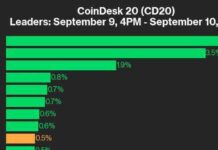The decentralized finance sector is currently experiencing a transformative growth spurt, thanks to the emergence of perpetual DEXs like Hyperliquid and Bluefin. These platforms have revolutionized traditional trading models, offering users a more robust and secure trading experience in the decentralized landscape.
The decentralized finance (DeFi) sector has come a long way since the introduction of Uniswap in 2018, which pioneered the use of automated market makers (AMMs) in cryptocurrency trading. Initially, centralized exchanges were the go-to choice for traders due to their high liquidity and user-friendly interfaces. However, concerns about centralized control and security vulnerabilities have led to a surge in demand for decentralized alternatives.
Challenges with AMMs
Despite their innovative approach, AMM-based exchanges have faced criticism for issues such as impermanent loss, high slippage, and the lack of advanced trading options like limit orders and leverage. These limitations paved the way for the rise of perpetual decentralized exchanges (Perp DEXs), which aim to address these gaps, particularly in leveraged trading.
Rise of Perpetual DEXs
Perpetual futures contracts have been popular on centralized exchanges due to their flexibility and leverage capabilities. However, their integration into the DeFi space was initially hindered by liquidity and latency challenges. The tide began to turn in 2024, with perpetual DEXs experiencing a rapid ascent. Platforms like Solana-based Jupiter and Drift saw a surge in trading volumes, driven by meme-coin trading and prediction markets.
One standout in this space is Hyperliquid, which has leveraged its high-performance Layer 1 chain to provide traders with robust trading solutions. Its ecosystem, which includes tools like HypurrFun and HypurrScan, has greatly enhanced the user experience and contributed to a significant increase in trading volume. Hyperliquid’s commitment to neutrality and decentralization mirrors the ethos of Bitcoin, further solidifying its position in the market.
Another promising player is Bluefin, which has demonstrated adaptability by transitioning across ecosystems, from Polkadot to Arbitrum and eventually to Sui. By utilizing Sui’s Move-based technology, Bluefin aims to offer fast and efficient trading experiences to its users. Despite facing challenges related to Sui’s valuation and adoption, Bluefin’s strategic focus on enhancing user experience sets it apart for potential growth.
To ensure sustainable growth, DEXs are encouraged to refrain from market-making their own assets, as this can lead to reputational damage if strategies fail. Instead, incentivizing professional market-makers through transparent mechanisms can boost liquidity and improve trading experiences. Furthermore, enabling permissionless trading can facilitate price discovery for new tokens, fostering community engagement and innovation.
In conclusion, the DeFi sector’s evolution is being reshaped by the rise of perpetual DEXs, which are introducing innovative solutions to the trading landscape. Platforms like Hyperliquid and Bluefin are at the forefront of this transformation, prioritizing user experience, addressing challenges, and driving sustainable development through strategic advancements. As these platforms continue to evolve, the future of decentralized finance looks even more promising.














